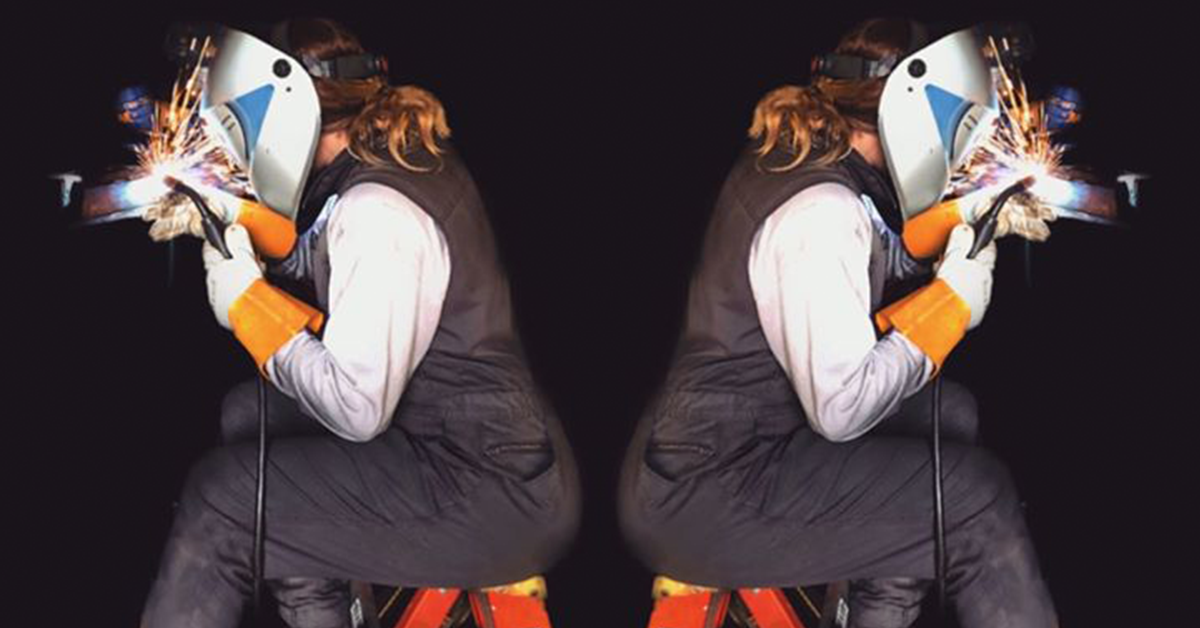 When I first joined the world of welding, I had no idea how many places you find welders. The place that most surprised me, however, was food processing. Of course it seems obvious now, all those stainless steel tanks to mix food, not to mention the metal pipes and tubing or metal chutes that the food passes through have to be welded. And now I know that they have to be welded utilizing a high-purity welding process, one in which the quality of the weld must be superior. The reason is simple: the welds can’t have any flaws, small occlusions, or even the tiniest of nooks where bacteria can flourish.
When I first joined the world of welding, I had no idea how many places you find welders. The place that most surprised me, however, was food processing. Of course it seems obvious now, all those stainless steel tanks to mix food, not to mention the metal pipes and tubing or metal chutes that the food passes through have to be welded. And now I know that they have to be welded utilizing a high-purity welding process, one in which the quality of the weld must be superior. The reason is simple: the welds can’t have any flaws, small occlusions, or even the tiniest of nooks where bacteria can flourish.
High Purity Welding in Food Processing
Stainless steel is a popular metal in food processing plants because it is easy to clean (as long as the welds are nice and smooth) and is resistant to corrosion. Take notice of all the metal parts, parts that have been welded at one time or another:
At Arc-Zone we like our M&Ms and if you’ve shopped with us you know you get a pack with every order (if you want to know why, check out the post over on JoeWelder.com), so I couldn’t resist finding a video about how M&Ms are made.
I didn’t notice a lot of stainless steel piping in the manufacture of M&Ms but in other food processing where liquid is transported around the plant (think dairy and brewery) stainless steel piping is integral to the operation. If you watch this video about Arc-Zone’s favorite brewer (it’s long!), and neighbor, you’ll see some amazing double hulled stainless steel fermenting tanks, and tons of shiny stainless steel pipes. (and learn about a great local beer)
For piping and tubing, you’ll want to use some kind of purge plug, baffle, inflatable bag, water soluble film, or water soluble paper to damn the area that you want to fill with purge gas. Note: I’ve heard of folks using crumpled up paper, even bread to create a damn… and I can’t emphasize this enough: that is NOT the recommended way to a top quality weld.
You’ll also want to be sure to monitor the oxygen levels using an oxygen sensor so you’ll know the weld zone is completely purged.
Make sure none of your lines, or valves for delivering your purge gas are leaking—or pulling oxygen IN to your weld zone.
You must maintain a clean weld zone to avoid contamination from particulates.
Additional Purge Welding Resources:
An overview of High Purity Welding Accessories at JoeWelder.com
Purge gas equipment for most every high purity welding application you can imagine at Arc-Zone.com
“Dam the purge gas and full speed ahead: a look at water soluble purge dam methods”
“A shielding gas primer for GTAW: gas selection and optimization”
(includes a sidebar on leak detection methods)
“Purge welding stainless steel for cleanability and corrosion resistance”

